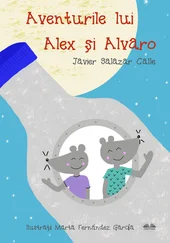One Saturday, after penning up the sheep, the shepherd saw that his boss was waiting for him outside the barn with a huge smile on his face and a letter in his hand. Tuone returned his smile, bowed his head, and tried to avoid him to go running back to his cave: rich people’s happiness had never brought good news to the island of Veglia. The owner caught up with him, took him by the arm, and showed him the letter, patting him on the back. It was hard for Tuone to believe that the letter was for him — he’d never received one before — much less that the professor was going to return and take him back with him to Italy. The idea that they had already set up a room for him inside the Museum of Archaeology in Rome was beyond belief. His boss didn’t tire of repeating the idea — although he knew that it would never get through to his servant — that of all the inhabitants of the Dalmatian archipelago, it was none other than Tuone Udina who was going to spend the rest of his days living in a palace. After letting the shepherd go on his way, he went into the farmhouse and wrote a reply, saying that they had received the news with pleasure, and that they would be happy to accept some reasonable compensation for losing their most loyal worker. He took care to add that, if it had not been for his father’s charity, the Dalmatian language would have become extinct during the internecine war of 1878.
For some time, Tuone continued to follow the routine of his shepherd’s life. Restricted by the vegetative condition of his fingers, he stayed in his cave until after the sun rose. When he summoned the energy to go and take out the sheep, the dizzying possibility of abandoning the island left him stuck on his rock, even in the scorching midday heat. By the week of the professor’s expected return he’d gathered the courage necessary to make his departure. Then, for the first time in twenty years, he decided to take a day off work. If he was going on a trip, it would be best that he cross over to Rijeka and buy himself some new army boots like the ones he’d seen his visitor wearing.
He dug up his lire, then left the cave and the woods along the little-used path that led directly to the coast. Passing by his rock, he crossed the sheep’s favorite valley. When he reached the promontory from which the coastline was visible, he saw in the distance that the stevedores were already loading the first ferry of the day. The prospect of waiting until the second trip, at midafternoon, without anything to do, impelled him to save the time it would take to go through the coves by cutting across the mountain along the cliff. He was certain that he was going to reach the dock on time when, crossing one of the fields that crowned the heights, he felt the earth give way beneath his feet. It took him a moment to realize that he had slipped into a hole. He couldn’t hear the sharp click of the detonator that was activated the moment he touched bottom.
ON THE DEATH OF THE AUTHOR
Your face is inscribed in my soul.
And how much I long to write of you.
GARCILASO DE LA VEGA
Some stories are, seemingly, impossible to tell. It must be at least ten years since I took a trip through California, and since then I’ve been trying to write, without the least success, the story of a particular grand finale: it’s the story of Ishi, a Yahi Indian who was discovered in his aboriginal condition in the remote ranching town of Oroville in August 1910.
I’d always wanted to take a trip that would begin in Cabo San Lucas, the southernmost point of the Californias, and wind up in whatever was its northernmost city, which turned out to be Oroville. On that trip, as I imagined it, my ex-wife and I would drive from south to north as if navigating some beat poet’s dream, and we would see amazing things, stop in impossibly sinister places, and talk to some free-spirited — and frankly bizarre — characters.
Unfortunately, things didn’t turn out that way. First, our trip by car through most of California began at the halfway mark — at the Los Angeles airport. Second, we weren’t cruising in a black Cadillac loaded with a stash of drugs, each more powerful than the last — instead we were driving an especially hellish minivan, in the not ungrateful, and hardly unbearable, company of my wife’s two grandmothers.
Although the diary of our trip doesn’t offer much in the way of literary fodder, it had its interesting moments, for example when we showed the grandmothers how to nullify some spicy chili peppers at a Chinese restaurant by dipping the tips in salt, or when one of them read a book of Ferlinghetti’s poems that I’d brought along to feel like a true beat, and said that she liked them. We also saw a photo exhibit about Ishi at the University Museum at Cal Berkeley.
The story of the last Indian in the United States living in a pure, untainted condition shouldn’t be a difficult one to tell, nor would it seem to conceal any unavoidable pitfalls for anyone ardently devoted to relating certain things while meaning others. But there’s something in the tale — or inside me — that makes it elusive: I’ve tried the pastiche technique, direct narration, diary entries, epistolary form, even the dreaded stream of consciousness, but the whole thing keeps slipping through my fingers like a fistful of marbles.
The facts are simple and transparent: early one morning, a group of workers found a man collapsed on the doorstep of a slaughterhouse, dying from starvation and exhaustion. They carried him inside the building and gave him water. Then they noticed that he was a wild Indian, something that made no sense, under the circumstances, but which their parents and grandparents had taught them to identify as an enemy. They tied his hands and feet — as if he were really capable of escaping — and sent for the sheriff.
The officer in question, perhaps the last Wild West cowboy still working for the government in that part of the United States, threw the Indian over the back of his horse, just as he was, and took him to jail, not because he wanted to make him suffer but because he didn’t know what else to do with him — at least that’s what he told the press. For the record, it seems that he dressed Ishi in his own clothes, and fed him food that his wife cooked especially so that the Indian wouldn’t die of hunger before he was turned over to the army, which was what the sheriff figured he was bound to do with him.
By midday, the news of the discovery had sped like a burning fuse through the whole area, so that a memorably tumultuous crowd gathered at the jail for a glimpse of the last savage in the United States. Among those that filed past his cell was a San Francisco newspaper correspondent, who dispatched a feverish wire describing the sheriff’s highly extraordinary negotiations between his own impassioned citizens — still nursing wounds from the long-ended Indian wars in that region — and the various owners of vaudeville shows that wanted to buy the Indian and add him to their slate of attractions.
Luckily for Ishi, who would’ve died had the sheriff been less honest or the army faster in coming to seize him and drag him off to a reservation, the story in the San Francisco newspaper was read by a professor. When the man noticed that nobody could understand the Indian’s language, he deduced that Ishi must be a speaker of Yana, a supposedly extinct language for which a friend of his was compiling a glossary.
The professor caught the first train to Oroville and, armed with his colleague’s notes about the Yahis’ language, went and rescued Ishi. Once back in San Francisco, he realized that, while saving the Indian, he hadn’t considered the problem of where to lodge him. So, although his own brand of logic seems even crazier than either Ishi’s or the sheriff’s, he obeyed what it whispered in his ear and brought him to the Museum of Anthropology.
Читать дальше












